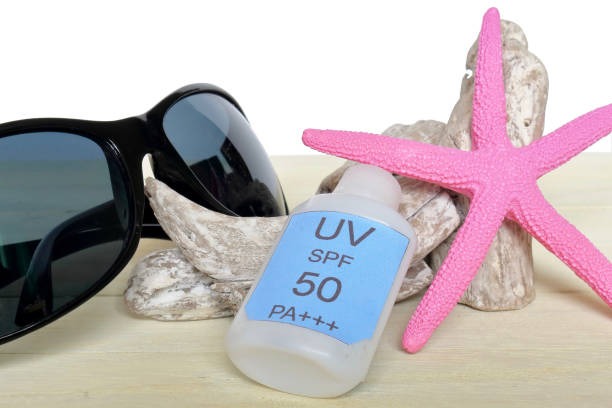
What Glasses Suit My Face? Best Frames for Your Face
February 27,2023

What is Boho Style? A Comprehensive Guide to Boho-Chic Fashion
February 13,2025

Virtual Glasses Try On - Find Your Perfect Pair Online
April 02,2024

UV Protection Glasses VS. Blue Light Glasses - Vooglam
July 20,2023

Newest Style Modern Trendy Mens Glasses | Vooglam
March 01,2024

Stylish Reading Glasses: Blending Fashion with Functionality
February 16,2023

What are photochromic lenses & glasses?
September 22,2023

Brown Eyes: The Beauty of the Most Common Hue
September 01,2024

The chubby face glasses for round face female
August 02,2023

What are prisms in eyeglasses?
March 20,2023

What are Bifocal Lenses? - Vooglam
April 14,2023

How to Read Your Eyeglass Prescription?
March 11,2023
What are photochromic lenses & glasses?

What Are Photochromic Lenses And Glasses?
More and more people are wearing photochromic glasses. Not only can photochromic lens glasses be added with a prescription to correct refractive errors, but they can also be used as sunglasses to protect your eyes from harmful UV rays and glare.
Photochromic lenses are characterized by their ability to change color and light transmittance under different lighting conditions. Lenses gradually darken when exposed to sufficient intensity of light (usually UV rays). Instead, as the light gradually dims, the lenses gradually return to transparency. Photochromic lenses can be made from materials such as glass, polycarbonate, or Trivex.
How Do Photochromic Lenses Work?
Photosensitive materials are added during the manufacturing process of photochromic lenses. These special material molecules will change the light absorption and reflection properties of the lens under different lighting conditions. It should be noted that the light-sensitive materials added to different types of photochromic lenses may be different, such as silver and copper bromide.
When in a low-light environment, the molecules of the light-sensitive material may be at a lower energy level, causing the lens to appear lighter or colorless to increase light transmittance. When exposed to strong light, the photosensitive material may undergo electronic excitation or structural changes, causing the lens to absorb specific wavelengths of light and convert it into a colored state to reduce glare and adjust light intensity.

Pros of Photochromic Lenses
Adapt to indoor and outdoor light changes without changing lenses. The color and light transmittance of photochromic lenses can automatically adjust according to light intensity while providing a better visual experience and comfort due to light filtering and glare reduction.
Eye protection. Photochromic lenses can filter ultraviolet rays and harmful blue light, reducing damage to the eyes and providing wearers with instant vision protection.
A variety of lens styles. Prescription photochromic lenses are available in a variety of colors and finishes. To suit personal preferences and fashion needs, they can also be customized to suit prescriptions or have protective coatings added.
Cons of Photochromic Lenses
The duration of discoloration is affected by external factors. Affected by external environmental factors such as temperature, humidity, and light. Therefore, the response speed of color-changing lenses when transitioning from strong light to low light will also be affected. How these factors affect lens discoloration is listed in the next part.
You may have to pay more cost when purchasing compared to regular glasses. Photochromic lenses are usually more expensive than regular lenses because they use special photochromic technology and materials. The production process may also be more complex.
The indoor discoloration effect is not obvious. Changes in indoor light may affect the visual experience. For example, the light transmittance of the lens is low under the light, but when you need to lower your head to pick up something dropped on the ground, the color-changing lens fades slowly and makes it difficult to see clearly at that time.

Factors on The Effect of Photochromic Lenses
Temperature, humidity, and light factors can have a certain effect on the performance and color changes of photochromic lenses.
Temperature: The response and rate of change of photochromic lenses may be affected by temperature. Higher temperatures may cause increased thermal motion within the photochromic molecules. Therefore, the response speed of photochromic lenses may become slower in high-temperature environments. Conversely, at lower temperatures, they may show faster changes.
Humidity: Changes in humidity can affect the performance of photochromic lenses. High-humidity environments may cause increased interactions between photochromic molecules, which may cause the color change of photochromic lenses to slow down or produce an uneven effect. Lower humidity may help better maintain the performance and responsiveness of photochromic lenses.
Light Intensity: Color changes in photochromic lenses are typically triggered by changes in light intensity. Strong light will cause structural changes in the photochromic molecules, causing the lens to change color. However, if the light intensity is not strong enough, noticeable color changes may not be achieved.

Customized Photochromic Glasses at Vooglam
Photochromic lenses have many advantages, but we need to understand the cost and budget planning of photochromic lenses when purchasing. The price of these lenses will vary depending on the brand, material, and other factors. But at Vooglam, you can find affordable glasses. Because Vooglam prescription photochromic glasses are custom-made, they offer high-quality lenses at a competitive price.
Vooglam offers the option to customize photochromic glasses online. These glasses can also be used as powered sunglasses. The 1.61 high index specification is recommended, which is available in amber and gray. Both colors can effectively block UV rays. Another advantage of gray lenses is that they will not change the original color of the scene, while also effectively reducing light intensity.

More FAQs About Photochromic Lenses
Are photochromic lenses suitable for computer use?
If you spend a lot of time in front of a computer, photochromic lenses may be a good choice. They can help reduce the strain on your eyes caused by screen glare. However, for optimal eye health, remember to take regular breaks!
Can I use photochromic glasses while driving?
Photochromic glasses can help drivers adapt to changing light conditions. However, because car windshields block UV rays, the speed at which glasses change color while driving may be affected. If it is intended to be worn while driving, this is something to consider before purchasing.
Which is better in photochromic lenses vs. polarized lenses?
Now, you may be wondering "How do photochromic lenses compare to polarized lenses?" Polarized lenses reduce glare from reflective surfaces but cannot adapt to changes in light. On the other hand, Photochromic lenses can adapt to light conditions but may not reduce glare as effectively as polarized lenses. The two lenses have different functions but can be worn on the same pair of glasses. Photochromic glasses with polarized lenses can fully realize the protective effect of glasses. Particularly useful when engaging in activities such as fishing or boating.
Are transition glasses and photochromic glasses the same?
You may also hear people refer to photochromic glasses as "transition glasses." In fact, the two are indeed the same type of glasses. Both can dynamically adjust the light transmittance according to the intensity of ambient light. Whether working overtime or vacationing in the sun, relieve eye fatigue and enjoy clearer, more comfortable vision, with photochromic lenses that actively guard against UV rays.
References:
Google Patents: “Method for manufacturing photochromic lenses.”

Vooglam Blog
Vooglam blog shares professional knowledge about eyeglass frames, lenses, etc., and provides help when purchasing and using eyewear products. At the same time, Vooglam focuses on fashion glasses to interpret the trend of glasses for you.



























